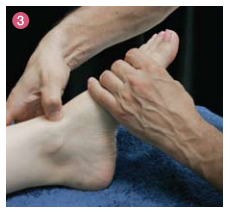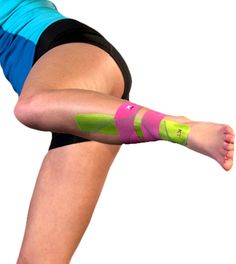How I Overcame Shin Splints (And How You Can, Too) In 9 Steps
*DISCLAIMER: I am not a doctor but I like to think of myself as a personal expert on shin splints. The following information anecdotal and is not medical or scientific.
FACT: Shin splints suck. They hurt. They can sideline you from your hike.
SO WHAT ARE SHIN SPLINTS: Shin splints (medial tibial stress syndrome) is an inflammation of the muscles, tendons, and bone tissue around your tibia. Pain typically occurs along the inner border of the tibia, where muscles attach to the bone (thank you OrthoInfo).
TAKE ACTION: So how do you overcome shinsplints on the trail and stick to your hike? Why with these 9 easy peasy steps of course…(#9 is the best remedy in my experience):
1. Want to
You have to have the drive and desire to overcome your crappy shin pain. Don’t use this as an out to get off the trail if you’re uber determined. Life without shin pain is possible…
2. RICE
Really. Rest: take a few days off. Sit on your butt. Ideally in town. You’re not going to like it, but it’s going to help.
Ice: ice ice ice. Wrap ice or ice packs around your shins. Leave on for 20 min. Take off for 20 min. Repeat until you want to huck the ice packs off the nearest mountain. It’s key to be in town for this obviously.
Compression: use an ace bandage to wrap the ice packs to your shins. Better yet, wear compression socks or compression sleeves. (The sleeves are easier and more versatile). Go with a legit brand that will offer real compression like 2XU or Zensah.
Elevation: Keep them feet up above your heart level or at least as high as you can get them for as often as you can.
3. Don’t go to a doctor
The first thing that pops up on wiki-how when you look up shin splints “is see your physician”. Let me save you some time: don’t bother! I was resting and thought, hey a doc might have some magical insight into the woe that is shinsplits…wrong. If your off trail doctor happens to be like mine and tells you something dumb like “well, some people just aren’t meant to hike” as the only possible solution or remedy or insight, it’s probably not worth your time unless you love being frustrated by ignorant people.
4. Stretch
Stretch your calves. Stretch stretch stretch. Several to dozens of times per day. Bonus: stretching all the time will keep you not quite so bored if you are resting. Lean forward against a wall, a tree, or your trekking poles.
Easy to Google simple stretches. Here are a few that I found right away that are decent: https://www.self.com/flash/fitness-blog/2011/05/4-shin-splint-solutions-and-st/
5. Alter your gait
Take shorter steps. And don’t point your toes out. Focus on keeping your feet parallel as you walk. Often shin splints are caused by arch collapse which walking with your toes pointed out will exacerbate.
6. Change your shoes and/or insoles
You may need more arch support to keep your arch from collapsing with every step (see #4). Either shoes with more arch support or insoles will keep your arches stabilized. I’m a fan of Green and Orange Superfeet but other rigid insoles with good arch support will do.
7. Hike gently
Ease back into it. A few miles a day. As soon as you start to recover, remaining active without overdoing it will get you back on your feet (ha!). I began with 5ish miles for a few days, upped it to 10 miles for a few days, and then resumed my usual hiking pace. That said, if you continue to experience pain or it gets worse, slow down.
8. Random Treatments
A few other tricks that I tried with varying success (listed in order of legitimacy) include:
- Roll out shins with water bottle or lacrosse ball. A very good idea.
- Massaging shins with aloe + aspirin. A park ranger suggested this. Turns out that’s what aspercreme is! Worth a shot…
- KT tape to the shins. Follow the instructions for shin splints. I’m not sure if this actually works… but maybe?
- Vitamin I. These babies usually make all the pain fade away. (But really don’t take too much, it’s terrible for your kidneys)
- Arnica montana and other naturopathic pain remedies. Ok I don’t really think homeopathic remedies really work (I’m all about most alternative therapies, but homopathic is a bit of a stretch). But did I try it? Of course! Did it help? Probably not!
9. Friction Therapy
I saved the best for last. Really I think friction therapy kicked my shin splints once and for all. I had never heard of this before, but Googling out of desperation will sometimes yield helpful results.

Friction therapy: snapping tendon across shin
(image courtesy of https://www.benbenjamin.com/pdfs/09SO.pdf)
This is helpful to have a hiking partner do for you. It involves snapping the tendon across the shin manually with your thumb for pressure. Caution: it can be INCREDIBLY painful. I felt a quick blast of shooting pain and a surge of rage when my hiking-partner-and-boyfriend did it to my shin. All it took was one quick snap, and I immediately began to recover (the therapy can take 4-5 times for a more extended duration).
See page 105, 3rd column for instructions on friction therapy – https://www.benbenjamin.com/pdfs/09SO.pdf
Is this potentially a bad idea? Yes.
Should it be practiced by the finest of hikertrash with no medical training? Probably not.
Will it work for everyone? I doubt it.
All I can say is that I was in pain and this helped me.
Happy Trails!
This website contains affiliate links, which means The Trek may receive a percentage of any product or service you purchase using the links in the articles or advertisements. The buyer pays the same price as they would otherwise, and your purchase helps to support The Trek's ongoing goal to serve you quality backpacking advice and information. Thanks for your support!
To learn more, please visit the About This Site page.










Comments 4
During the AT in 2015 I had the worst shin splint in my right shin, like a long rectangle of pain. At times I could only walk about four steps then had to rest. The pain would ebb and flow, took about 2-3 days before it became manageable but eventually it worked itself out. Reduced mileage by about 3 miles so instead of 15-18 did 12-15 depending on terrain. Never experienced that before. Some good points. I did use some cream that helped a little. But the point is, it will (can) get better and shouldn’t disrupt your goal.
I used ro have problems with shin splints. I started doing these toe lift exercises a couple of years ago and haven’t had any problems since.
https://youtu.be/66r_kWvgwUo
We did 82 miles on the Highline Trail in 2015 – it was awesome!! I highly recommend it!!
Now your mom can spread HER wings, and fly. I wish you the best of luck. -RN